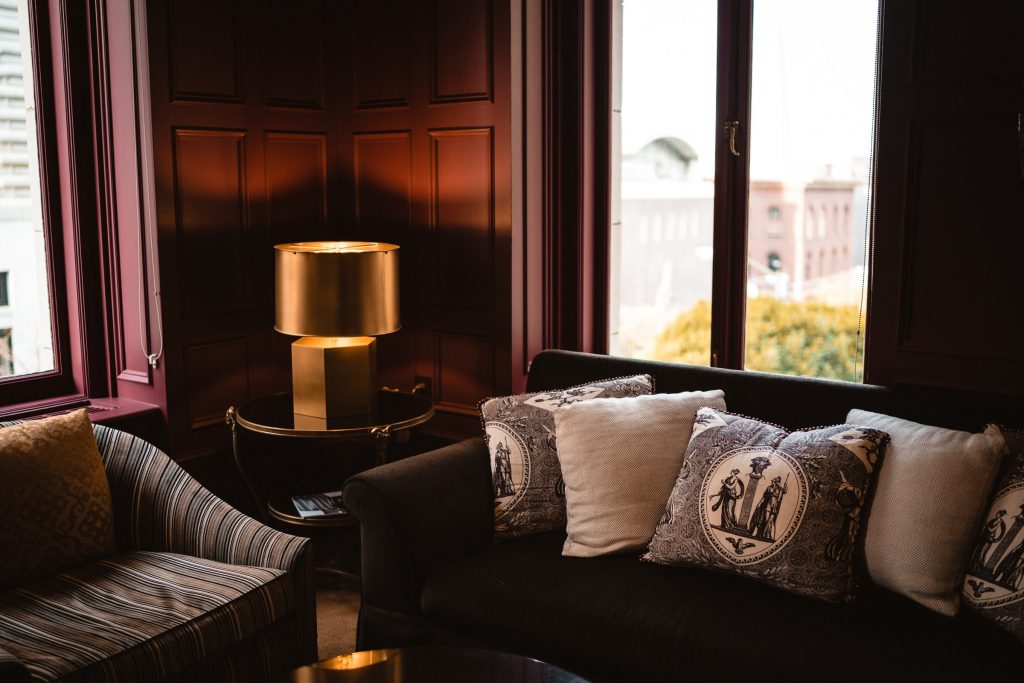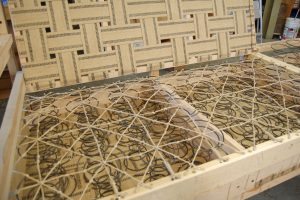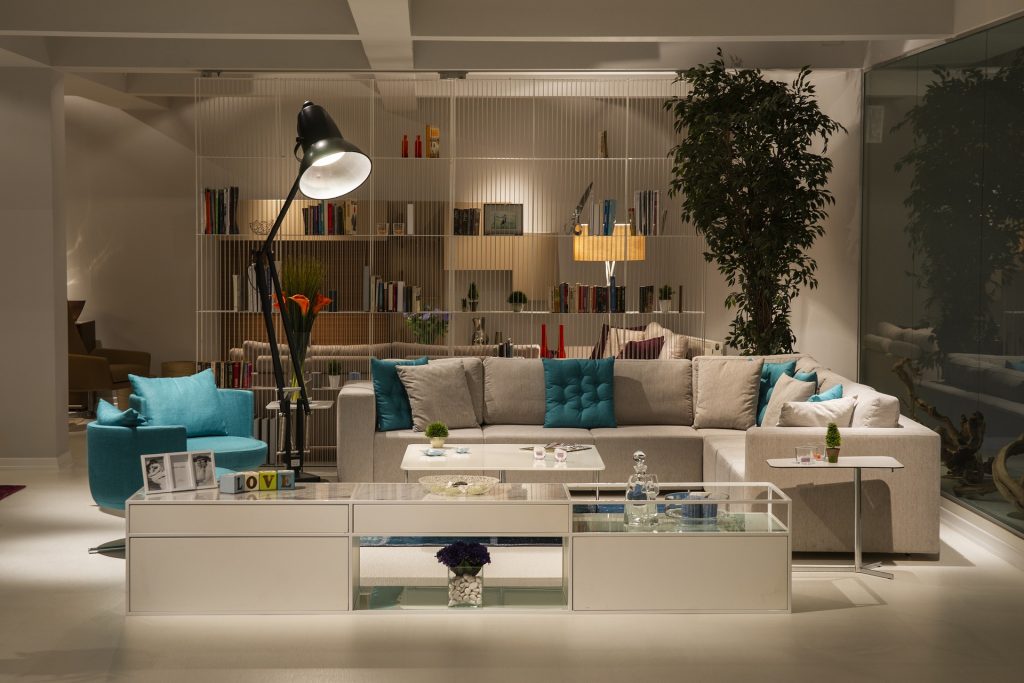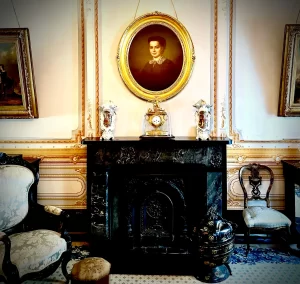
One of the great laments in the interior design community is the desire (or, more accurately, expectation) from clients to source furniture and decor from the retail sources that the clients are so familiar with. This is to be expected, of course.
Buying furniture at retail is how most people furnish their homes. Whether it be the discount furniture store, the mid-range catalog brands, sprawling big-box emporiums, or online marketplaces, all are accessible to Jane and Joe Public only a short drive away or, better yet, with a tap of the screen on a smartphone. In fact, if you were to select a random stranger on the street and ask how they acquired their furniture, the answer would most likely be that they purchased through some fill-in-the-blank retail purveyor.
In some ways, consumers are spoiled for choice when it comes to the availability of retail decor and furniture options. The scope of merchandise spans vastly across styles and price points, offering seemingly endless opportunities to buy. Presumably, no matter how niche your style, you should be able to find something.
That’s the popular idea, anyway. The reality is a little more complicated and nuanced.
Mass Market Appeal

As creative people, we decorators are drawn to unique and expressive pieces that help to realize our creative visions. Our designs are conceptual, and every element must not only fit into a guiding concept, but must contribute aptly to carry that concept forward clearly and emphatically. This means that we can be very selective about the items we specify for our designs. We demand the creative freedom to develop entirely new products, if necessary.
While we are often able to furnish rooms using easily accessible items, it is not unusual for us to work with our partners in the trades and arts to create the extraordinary. We rely on these relationships to help us bring visions to life!
The average consumer, on the other hand, does not typically have access to resources or knowledge about customization to be able, through their own devices, to acquire unique furnishings. Hence, they are subject to the whims and tastes of the retail machine.
This is not necessarily bad. Frankly, the average person can live a fine and happy life with a West Elm sofa or IKEA dining table. The nightstand from Amazon or the computer desk from Walmart are perfectly serviceable, and they may even ship for free! If there are associated environmental or social costs related to such ease of access, most consumers are none the wiser.
Truth is, when it comes to price and and instant gratification, the vast majority of people are well-served by shopping retail. To the average person, price and functionality are the most important concerns when purchasing furniture and decor, followed by how quickly they can bring it home. Design is often only of limited importance—if of any importance at all. And for those who do care about design, large retailers stand ready to meet the demand for the trendiest products by hiring creative staff in-house or on contract. Even if not, you can still choose from a limited selection of upholstery options for that mid-range sofa, at the very least.
Don’t deluded yourself into thinking that the high end of the market can escape the pervasive presence of retail, either. Just because Design Within Reach or Restoration Hardware demand premium prices does not mean that their products are any less mass-market.
Retail is the name of the game, and for the average person it works.
What if you’re not average?
Rattan has grown increasingly prevalent the last couple of years, largely due to the popularity of the boho trend (which in turn is a reaction against prosaic MCM redux). But only a few short years ago, finding good rattan furniture was like searching for a needle in a haystack.
I’ve noticed a particular phenomenon where I get turned on to something only to find out I’m either an extremely early adopter or entirely on the cutting edge, and then several years later after I’ve moved on it will explode on the scene. It’s a gift and a curse. Anyway, four or so years ago I had gotten it in my head that I needed a caned daybed for a room design. Believe me when I say that I scoured the entire city of Seattle as well as internet looking for the right daybed, and could not find a single one that wasn’t either the wrong dimensions, prohibitively expensive (I’m talking tens of thousands, here), or just bad quality. It was a rattan desert out there!
This was still before I had started Maison Dumar Interiors, and so I only had access to retail furniture at the time. I was SOL. Rattan wasn’t really on anyone else’s radar, and so without the demand, furniture retailers hadn’t even thought to create a supply. I was entirely at their mercy, and eventually had to move in a different direction since I wasn’t going to find what I wanted.

In 2021, of course, you can’t swing a baseball bat without striking a rattan furniture piece. Be that as it may, the lesson here is that truly creative and visionary people—the above-average and exceptional—will never have their needs met by relying only on retailers. There are simply too many limitations.
Economies of scale and efficient industrial processes allow major retailers to produce furnishings in large quantities at low prices, but at the cost of limiting the options available to discerning consumers. Trend cycles in interiors have always been slower than in fashion; furniture retailers are able to specify items from a defined range of styles and select upholstery options for quick assembly for a number of years, perhaps with slight tweaks between seasons. In other cases, many retail companies may acquire the most popular products from just a few wholesale vendors, saturating the market for those items.
Where furnishings are manufactured also impacts the price. Plainly, items manufactured overseas in countries with lower labor costs and in lower quality materials means that consumers are able to pay lower prices, even after the costs of logistics, marketing, and markup are factored in. For obvious reasons, this is the sourcing method of choice for discount furniture retailers and big box stores, and the markup can be significant!
But many of the larger specialty retailers do still offer products manufactured here in the United States from suppliers in states like North Carolina (which has been a major hub for furniture manufacturing for decades) and in northern Mississippi. In these cases, you can be assured you will get a well-made piece, but you will be expected to pay more and still be limited to the specific styles in vogue at the moment, along with the finite upholstery options chosen by the retailer.
There is another way to buy furniture, however
The cost to purchase a well-made, US-manufactured new sofa (at, say, Crate and Barrel) will likely run about two- to four- thousand dollars—not including taxes, shipping, or delivery. Anything more than that, and you are likely paying for branding, while anything less means corners were cut somewhere in the process. If you like Crate and Barrel’s styles, fabric, and cushions options, then great for you! You just bought a sofa! But not everyone fits into the aesthetic demographic of Crate and Barrel, or any of the other mid-range catalog retailers. Heck, not everyone even likes the more up-market retailers like Design within Reach, etc.

Thankfully, for those who prefer their furniture with a little more brio, customization offers a creative outlet. Many people shy away from this route thinking that it is excessively expensive. However, all-in, a custom sofa using your own chosen fabric, premium down-wrapped cushions, eight-way hand-tied spring suspension, and a securely constructed frame with strong joinery made from sustainable and traceable hardwood can still fall within within that same two- to four-thousand dollar price range.
In fact, with custom furniture, the cost lies not so much in a quality frame but with the actual fabric, which can run the gamut in pricing. But a knowledgeable decorator can steer you to a suitable, cost-effective fabric if that is a concern.
Decorators and designers work with custom manufacturers, vendors, and craftspeople across the country and even within your own city to not only source, but also produce the most original furniture creations possible. Yes, it may take a little longer, but unique furniture that reflects your individual style and personality is worth waiting for, no? Good things truly come to those who wait.
Retail furniture offers a lot of convenience, but it is designed and produced to appeal to the largest possible audience. It is truly a one-size-fits-all approach to furnishing an interior. And while custom furniture will never be able to compete on price or ease of access, it will always supersede retail offerings in terms of originality, environmental friendliness, value.









2 Responses
Comments are closed.